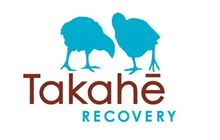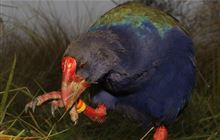Bad weather and broody birds postpone takahē translocation
Archived content: This media release was accurate on the date of publication.
Introduction
A historic translocation of takahē to the first new wild site outside of Fiordland has been thwarted by bad weather and early breeding.Date: 23 August 2017
In a significant step for the Takahē Recovery Programme, 23 takahē were due to arrive at their new home at Gouland Downs on the Heaphy Track in Kahurangi National Park this month, followed by another seven in January 2018.
DOC Takahē Operations Manager Deidre Vercoe says early August has not delivered the required weather window and the operation has been pushed out to early 2018.
“The Takahē Recovery Team, iwi and partners put in a huge effort to prepare for this transfer, but after several weather delays early in the month, it became apparent that the birds had other things on their minds", she says.
August was selected as the month of transfer because it is after the hardest part of winter, yet prior to the breeding season. Transfers are not carried out in the middle of the breeding season, due to an increased risk of harm to a female bird through handling, if she is carrying an egg.
“However, a mild winter in the south has seen the Burwood-based birds getting busy a little earlier than expected and we’ve decided in the best interests of the birds to postpone until early 2018", says Deirde Vercoe.
DOC Takahē Senior Ranger Glen Greaves says despite the delay, the translocation will be a huge boost to the recovery of the species.
“With the population now at more than 300 birds, the Programme is starting to run out of space at the current takahē sanctuaries and establishing new wild sites is the best option to house this growing population.”
Gouland Downs in Kahurangi National Park was selected because of its large areas of intact tussock grassland and extensive predator control network. If successful, the site could accommodate up to 40 pairs in the future.
“Currently takahē are only found in the wild in the remote Murchison Mountains of Fiordland. The Programme’s long-term goal is to have self-sustaining populations of takahē roaming wild in their former natural range,” Glen says.
“This move to Kahurangi National Park, where they’ve been absent from for more than 100 years, will be a big step towards achieving that goal.”
Contact
For media enquiries contact:
Email: media@doc.govt.nz


